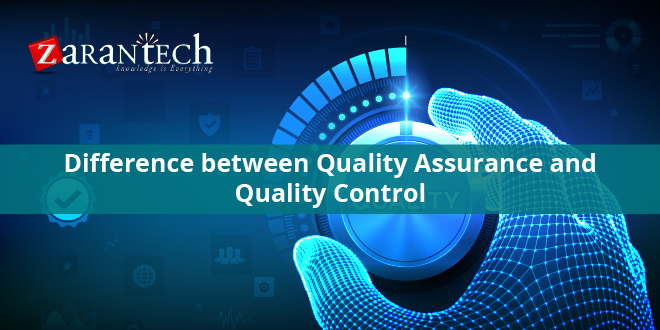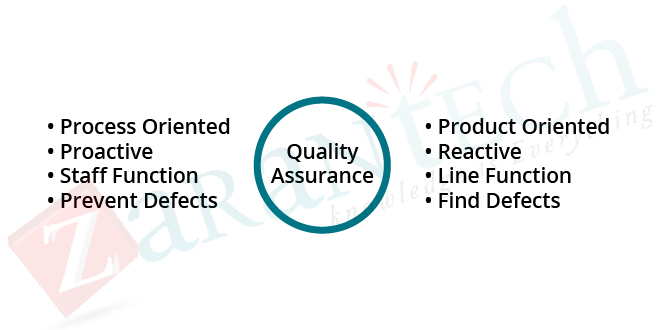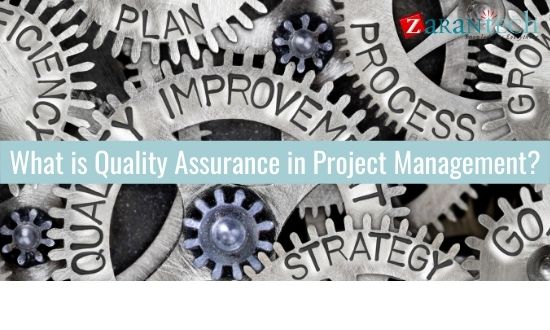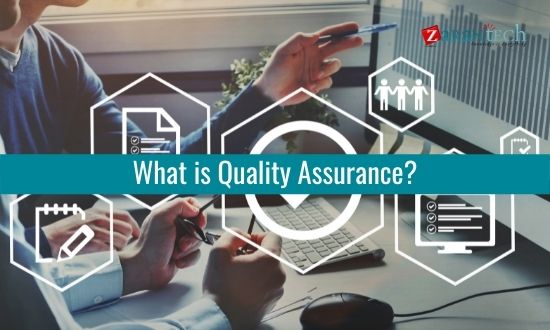Difference between Quality Assurance and Quality Control
Category: Quality Assurance Posted:May 04, 2017 By: Ashley Morrison Understanding Quality Assurance (QA) and Quality Control (QC) requires a clear understanding of what Quality refers to in the first place. Quality is defined as the level to which a group of existing characteristics will fulfill requirements. Or simply put, quality is conformance of a product or service to requirements. If a customer’s needs are met and exceeded then the product or service is of high quality, if a product or service fails to meet the minimum customer requirements, then it is said to be of low quality.
Understanding Quality Assurance (QA) and Quality Control (QC) requires a clear understanding of what Quality refers to in the first place. Quality is defined as the level to which a group of existing characteristics will fulfill requirements. Or simply put, quality is conformance of a product or service to requirements. If a customer’s needs are met and exceeded then the product or service is of high quality, if a product or service fails to meet the minimum customer requirements, then it is said to be of low quality.
Since QA and QC put together to form an integral part of the organization’s Quality Management Plan, the efficiency of delivery teams depends directly on the stakeholders and management understanding the distinction between QA and QC clearly.
Even though quality systems are vital to the overall project success, if poorly managed, such systems can lead to delays in delivery and poor quality.
Introduction
Ambiguities in the understanding of QA and QC and their contribution to a project will lead to strained communication efforts between departments and organizations, ultimately impacting quality
Even though QA and QC are adjacent concepts, and both are basically varied in their focus. While QA is a preventive process that manages quality, QC is a reactive process which is utilized to validate the product quality.
Register for Quality Assurance Live Webinar

Let us go into why both QA and QC are equally important to a quality management system. If only QA is applied to company products then what will exist is a group of processes which can be implemented to ensure high product quality, but the product delivered will never be quality checked in actuality. And on the other hand, if an organization only focuses on QC then the company will just be running tests, without knowing how to detect and eliminate problems in QC. Therefore, bot QA and QC are required in measured proportions to ensure customer expectations are met.
Understanding the Difference between QA and QC
Quality Assurance: A Strategy of Prevention
QA is centered on planning, documentation and agreement upon a group of guidelines that need to ensure quality. QA planning is taken on during project initiation and will draw on both client specifications and industry or company standards. Conventionally, the end result of QA planning is a set of QA planning activities such as quality plans, inspection and test plans. This will also involve defect tracking tools coupled with the training required for people to handle the chosen methods and processes
The primary objective of QA lies in the prevention of defects from being included in the solution, product or service in the first place. Simply put, QA refers to a pro-active management practice that is utilized to ensure a pre-specified degree of quality for what will most likely be an IT initiative.
Taking on QA at the start of a particular project is the key to minimizing risks that have been recognized during requirement specification phases. Project risk management is facilitated by enhanced communication and is vital for the realization of QA that is effective. It is a well-established fact that risk mitigation strategy has as a component, clear communication of the risks involved in project execution along with possible risk resolutions with the team and team members.
Go through our Top 30 Interview Questions to crack the QA interview
Quality Control: a Strategy of Detection
All the activities architected to decide the level of quality of the product or service is known to be what constitutes Quality Control. QC is a reactive process by which quality is monitored and gauged and includes all the operational activities needed to satisfy the requirements for quality. Such activities are agreed upon by customers and stakeholders alike before project work is started.
QC includes the validation of the conformance of product output with desired levels of quality. This means that, in the software development lifecycle, the IT solution will be measured against customer need with varying checks being conducted at pre-planned points in the development lifecycle. Structured walkthroughs, testing and code inspections, amongst other techniques are used to make sure that the solution will match or exceed customer expectations.
You may also like to read : How QA helps you to release your Software Faster?
Benefits of Quality Management
A highly structured approach to quality management brings about a great deal of benefits which can be harnessed if focused on.
Quality Control is utilized along with certain quality enhancement activities to pinpoint and offer feedback on the root causes of various quality issues. The consistent use of such an approach across varying projects will ensure that the feedback strategy will work towards recognizing root-cause problems and develop strategies to eliminate such problems. Such a comprehensive approach will ensure the team achieves high levels of quality consistently.
Formulation and execution of a good quality management plan will lead to these benefits:
- Enhanced customer satisfaction levels leading to repeat clients and new customer through word of mouth and other referral methods.
- Such a plan will lead to a highly motivated project workforce that comprehends primary objectives of the quality management plan along with active participation in plan execution
- This will directly lead to minimization and in some cases complete elimination of process and product waste through an elimination of rework. The rework bypassed will be either the need to address product flaws or the gap between the current product quality and desired client level of quality.
- Such plans will boost the levels of confidence while planning, since the activities arising out of unscheduled rework, will disappear.
- A plain and simple increase in bottom line through various channels such as new projects arising out of increased customer confidence and referral clients. And also the savings arising out of reduction in rework will be considerable, adding to initial investment capital.
Learn Quality Assurance from Industry Experts
Conclusion
Both QA and QC processes aim to make products and services defect-free, ensuring it conforms to customer requirements. Even though the objective of both processes is the same, the approach used to achieve the objective is distinctly different. While Quality assurance is a process-based approach, quality control is a product based approach. QA architects a process so that the resultant product from a process is defect free and a QC is responsible for checking a product when it is being produced so that defective products don’t enter the market. In conclusion, equal focus on both QA and QC will guarantee project success.
Check out this insightful video on Introduction to Quality Assurance for beginners:





 99999999 (Toll Free)
99999999 (Toll Free)  +91 9999999
+91 9999999